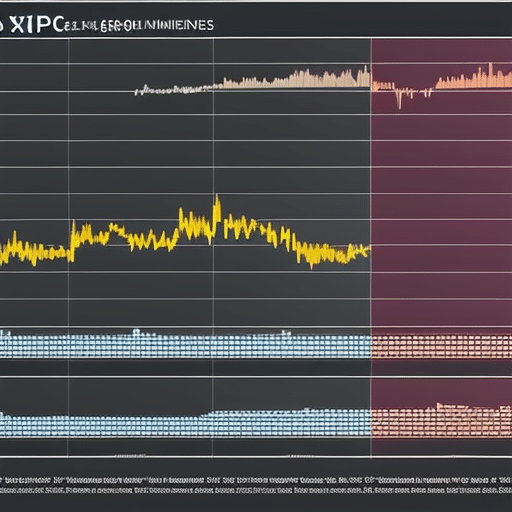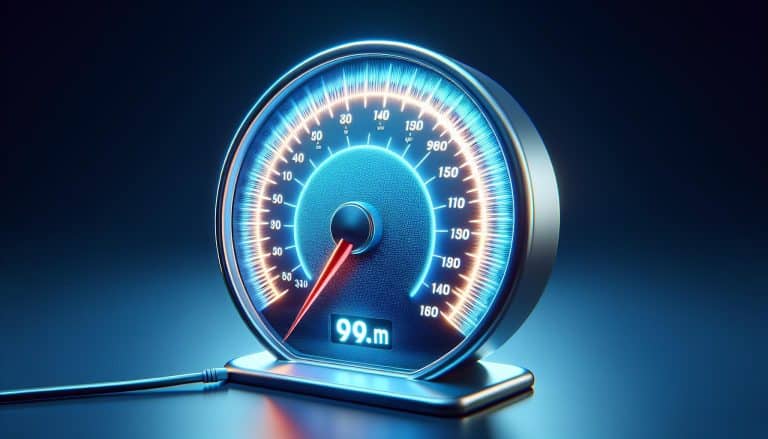Yen to USD: Japanese Currency Conversion Explained
As you plan your trip to Japan, you’re probably thinking about the best way to exchange your US dollars for yen – and you’re not alone. Last year, over 31 million tourists visited Japan, each facing the same currency conversion conundrum. You might be tempted to exchange your money at the airport or a local bank, but you’ll likely get a less-than-favorable rate. With exchange rates fluctuating constantly and providers offering differing fees, you’ll want to understand the intricacies of yen to USD conversion to avoid costly mistakes and make the most of your trip.
Key Takeaways
• The yen to USD exchange rate constantly fluctuates due to market forces, economic conditions, and geopolitical events.
• Different providers offer varying exchange rates and fees, making it crucial to compare rates to get the best deal.
• Understanding conversion fee types, such as commission fees and exchange rate markups, can help minimize transaction charges.
• Using ATMs affiliated with banks, avoiding airport and tourist area ATMs, and opting for local currency can reduce fees.
• Comparing rates among different providers, such as banks and online currency exchange services, can help get the best exchange rate.
Understanding Yen to USD Exchange
When you’re exchanging yen for US dollars, understanding the current exchange rate is crucial to get the best value for your money. You don’t want to end up with a bad deal, losing a significant amount of cash in the process. To avoid this, you need to know how the exchange rate works and what factors affect it.
The exchange rate is the price of one currency relative to another. In this case, it’s the number of US dollars you can exchange for a certain amount of yen. The rate fluctuates constantly due to market forces, economic conditions, and geopolitical events. As a result, the value of your yen can increase or decrease rapidly.
You can exchange yen for US dollars at various places, such as banks, currency exchange offices, or online platforms. Each option has its pros and cons, including fees, exchange rates, and processing times. For instance, banks may offer a lower exchange rate but provide a more secure transaction. Online platforms, on the other hand, may offer better rates but charge higher fees.
Before making a transaction, you should compare rates and fees among different providers to get the best deal. Additionally, consider the timing of your exchange, as rates can change rapidly. With a solid understanding of the exchange rate and the exchange process, you’ll be able to make informed decisions and get the most value for your yen.
Current Yen to USD Rates
Now that you have a solid understanding of how the yen to USD exchange rate works, you’re likely wondering what the current rate is and how it’ll affect your exchange. As you’re reading this, the current yen to USD rate may have changed. To give you the most up-to-date information, let’s assume you’re using a reliable currency conversion tool or checking the current rate on a financial website. The current rate is approximately 1 USD = 110-120 yen. Keep in mind that exchange rates can fluctuate constantly, so vital is to check the current rate before making any transactions.
When exchanging your money, you’ll want to keep an eye on the current rate to get the best deal. A small difference in the exchange rate can result in significant savings, especially for large transactions. Let’s say you’re exchanging $1,000. With a 110 yen to USD rate, you’d get 110,000 yen, but with a 115 yen to USD rate, you’d get 115,000 yen. That’s a 5,000 yen difference. To make the most of your exchange, it’s imperative to stay informed about the current rate.
When checking the current yen to USD rate, make sure to use a reliable source. Banks, currency conversion websites, and financial news platforms often provide the most accurate and up-to-date exchange rates. Don’t rely on unofficial sources or outdated information, as this can lead to poor exchange rates or misunderstandings about the current market.
Factors Affecting Exchange Rates
When examining the yen to USD exchange rate, you’ll need to weigh how various factors can impact its value. Economic indicators, such as inflation rates, interest rates, and GDP, have a marked impact on exchange rates – for instance, you may expect the yen’s value to rise if Japan’s interest rates increase while US interest rates remain the same. Additionally, you’ll discover that global events like earthquakes, elections, and new trade policies also have a marked impact on the exchange rates of Japan’s currency and US’s currency.
Economic Indicators
Tracking economic indicators is essential for you to make informed decisions about exchanging yen to USD, as they can profoundly influence exchange rates. You’ll want to keep an eye on Japan’s GDP growth rate, inflation rate, and unemployment rate, as these indicators can impact the value of the yen. A strong economy with low unemployment and rising GDP can lead to a stronger yen, while a weak economy can cause the yen to depreciate.
You’ll also want to monitor the Bank of Japan’s (BOJ) monetary policies, such as interest rates and quantitative easing. If the BOJ lowers interest rates or implements expansionary policies, it can weaken the yen. On the other hand, if the BOJ raises interest rates or tightens monetary policy, it can strengthen the yen. Additionally, you should track the US Federal Reserve‘s monetary policies, as they can impact the USD’s value. By keeping track of these economic indicators, you’ll be better equipped to make informed decisions about exchanging yen to USD and can potentially save money or maximize your returns. Staying up-to-date on economic indicators can help you navigate the ever-changing currency market with confidence.
Global Events Impact
Beyond economic indicators, global events can also have a significant impact on the yen to USD exchange rate, so it’s crucial for you to stay informed about developments that may affect currency markets. You need to keep an eye on what’s happening around the world, as major events can influence exchange rates.
When it comes to the yen and USD, several global events can create waves in the market.
- Wars, terrorism, and global instability can strengthen the yen, as investors seek safer assets
- Natural disasters, such as earthquakes or hurricanes, can weaken the yen if they have a significant impact on Japan’s economy
- Elections, policy changes, or trade disputes in Japan or the US can lead to fluctuations in the exchange rate
- Global economic downturns or recessions can cause a flight to safety, increasing demand for the yen
- International trade agreements or tariffs imposed by the US or Japan can also affect the exchange rate
Conversion Fees and Charges
As you start exchanging your yen to USD, you’ll want to understand the various conversion fees that’ll eat into your funds. You’ll need to know how to minimize transaction charges, especially when making purchases overseas or withdrawing cash from ATMs. By recognizing the different types of fees involved, you can avoid surprises and make the most of your currency exchange.
Understanding Conversion Fee Types
When converting yen to USD, you’ll typically encounter various fees, including conversion fees, transfer charges, and other markups that can eat into your transferred amount. To maximize your transferred amount, it is vital to understand the different types of conversion fees to minimize the impact on your wallet.
You’ll often come across these fees:
- Commission fees: A flat rate or percentage charged by the service provider for each transaction.
- Exchange rate markups: The difference between the wholesale exchange rate and the rate you’re given, which can be substantial.
- Transfer fees: Charges for transferring funds between accounts, which can be fixed or variable.
- Service fees: Additional charges for services like same-day or next-day transfers.
- Withdrawal fees: Fees for withdrawing cash from an ATM using a foreign card.
It is imperative to know which fees you’ll be charged and how they’ll affect your transfer. Take the time to review the terms and conditions of your service provider, and consider comparing rates among different providers to get the best deal. By understanding the various conversion fee types, you can make more informed decisions and save money in the long run.
Minimizing Transaction Charges Overseas
To save even more money on your yen to USD conversions, you’ll want to focus on minimizing the various transaction charges that can add up quickly when using your credit or debit card overseas. You’ll face these charges whenever you make a purchase, withdraw cash, or conduct any other type of transaction. Begin by using ATMs affiliated with your bank to reduce withdrawal fees. You can also avoid using ATMs located at airports or tourist areas as they tend to charge higher fees.
Make purchases with a credit card that doesn’t charge foreign transaction fees, and always opt to be charged in the local currency (yen) instead of your home currency (USD) to get the best exchange rate. Additionally, keep your transactions to a minimum to reduce the number of fees charged. When you do need to exchange cash, visit a bank or currency exchange office instead of using airport kiosks or hotel desks, which often have unfavorable exchange rates. Finally, monitor your account activity closely to detect any unusual fees.
Hidden Fee Breakdown Explained
You’ll encounter two main types of hidden fees when converting yen to USD: conversion fees, which are levied by your bank or credit card issuer, and charges, which are imposed by the merchant or ATM operator. These fees can add up quickly, so it is crucial to understand how they work.
- Conversion fee: Your bank or credit card issuer charges you a percentage of the transaction amount, usually ranging from 1-3%.
- Transaction fee: A flat fee imposed by your bank or credit card issuer for each transaction, typically $2-$5.
- ATM fee: The ATM operator charges you for using their machine, usually $2-$5.
- Merchant fee: Some merchants, especially in Japan, may charge a small fee for processing foreign transactions.
- Dynamic currency conversion (DCC) fee: Some merchants may offer to convert the transaction amount to USD at an unfavorable exchange rate, resulting in a higher fee.
Keep an eye out for these hidden fees, as they can eat into your travel budget. By understanding how they work, you can make informed decisions when converting yen to USD and minimize unnecessary charges. Always review your transaction receipts and statements to guarantee you’re not being overcharged.
Bank Exchange Rates Compared
Comparing bank exchange rates for yen to USD conversions can save travelers and businesses a significant amount of money, as rates vary across institutions. You’ll want to know the best rates available to get the most out of your yen. Let’s plunge into the differences in bank exchange rates, so you can make an informed decision.
Major banks like Bank of America, Wells Fargo, and Chase offer yen to USD exchange services, but their rates differ. For instance, Bank of America might offer a rate of 1 JPY = 0.0092 USD, while Wells Fargo offers 1 JPY = 0.0090 USD. This may not seem like a lot, but if you’re converting a large sum, the difference adds up quickly. You can expect to lose around 1-3% of the total amount due to the bank’s margin.
To compare rates, you can visit the banks’ websites or check their online currency conversion tools. Some banks also offer special rates for online transactions or larger amounts. Additionally, you may want to take into account working with a specialized currency exchange service, which can often provide better rates than traditional banks. Keep in mind that rates can fluctuate constantly, so it is crucial to compare them just before making a transaction. By taking the time to research and compare bank exchange rates, you can save money on your yen to USD conversions.
Best Ways to Exchange Money
Now that you know how bank exchange rates can affect your yen to USD conversions, it’s time to explore the best methods for exchanging your money to maximize your savings. You’ll want to weigh the pros and cons of the fees, exchange rates, and convenience of each option to find the one that works best for you.
- Currency exchange offices: These offices specialize in exchanging currency and often offer competitive rates. They may charge fees, but they can be a good option if you’re exchanging a large amount.
- Online currency exchange services: These services allow you to exchange currency online and have it delivered to your home or debit card. They often offer competitive rates and lower fees than traditional banks.
- Hotel exchange desks: Many hotels in Japan offer currency exchange services, but the rates may not be the best. It’s a convenient option if you’re short on time, but be prepared for higher fees.
- Currency exchange machines: These machines are found at airports and train stations and allow you to exchange currency quickly. The rates may not be the best, but it’s a convenient option if you’re in a hurry.
- Traveler’s checks: While not as common as they once were, traveler’s checks can still be exchanged for cash in Japan. They offer a secure way to carry money, but the exchange rates may not be the best.
Using ATMs in Japan
Now that you’re in Japan, you’ll want to access your cash, and using ATMs is a convenient way to do so. You’ll need to be aware of the withdrawal and transaction fees associated with using ATMs abroad, as they can add up quickly. Your first step will be to locate an ATM in Japan, which can be found at many banks, convenience stores, and even some train stations.
Withdrawal and Transaction Fees
When using ATMs in Japan to withdraw yen with your USD-denominated debit or credit card, you’ll typically be charged several fees. Your bank will likely charge a foreign transaction fee, which can range from 1% to 3% of the withdrawal amount. Additionally, you may be charged a withdrawal fee by the ATM operator, which can be a flat rate or a percentage of the withdrawal amount.
Here are some potential fees you might encounter when using ATMs in Japan:
- Foreign transaction fees: 1% to 3% of the withdrawal amount
- ATM operator fees: ¥200 to ¥500 (around $2 to $5 USD) per withdrawal
- Bank fees: $2 to $5 per withdrawal
- Currency conversion fees: 1% to 2% of the withdrawal amount
- Dynamic currency conversion fees: 1% to 2% of the withdrawal amount (if you choose to convert your transaction to USD at the ATM)
It’s essential to check with your bank and the ATM operator to understand the fees associated with your specific card and transaction.
Locating ATMs in Japan
Your best bet for finding ATMs in Japan is to look for machines located at banks, post offices, and major convenience stores. You can also find them at train stations, airports, and some shopping malls. Many ATMs in Japan are part of a network called "ATM Passport," which allows you to withdraw cash with your foreign card.
Here’s a rough idea of what you can expect when using an ATM in Japan:
| Location | Availability | English Support |
|---|---|---|
| Major cities | 24/7 | Yes |
| Rural areas | Limited hours | Maybe |
| Tourist areas | 24/7 | Yes |
Don’t be surprised if some ATMs don’t have English support, especially in rural areas. If you’re having trouble, try to find an ATM at a major bank or post office, as they’re more likely to have English interfaces. It’s also a good idea to inform your bank back home about your travel plans, so they don’t flag your transactions as suspicious.
Credit Card Exchange Rates
Exchanging yen to USD with a credit card can be a convenient option, but having a clear grasp of the exchange rates and fees associated with this method is vital. You’ll want to understand how your credit card company handles international transactions and what rates they use. Most credit card companies use the wholesale exchange rate, which is the rate at which banks exchange currency, but they may also add their own fees.
When using a credit card to exchange yen to USD, you’ll typically be charged:
- A foreign transaction fee, which can range from 1% to 3% of the transaction amount
- A conversion fee, which can range from 1% to 2% of the transaction amount
- A interest rate on your outstanding balance, if you don’t pay your bill in full
Some key factors to weigh when using a credit card for yen to USD exchange:
- Your credit card company’s foreign transaction fee and conversion fee
- The wholesale exchange rate used by your credit card company
- Any interest rates or fees associated with your credit card
- The type of credit card you have (e.g. cashback, rewards, etc.)
- Any travel benefits or rewards offered by your credit card company
Avoiding Poor Exchange Rates
One key strategy for maximizing the value of your yen is to steer clear of poor exchange rates, which can eat into your conversion amount and leave you with less USD than you’d like. You’ll want to avoid exchanging your yen at airports, hotels, or tourist areas, as these places often have less favorable rates. Additionally, you should be cautious of currency exchange services that charge high fees or commissions, as these can also reduce the value of your conversion.
It’s also essential to be aware of the current exchange rate before making a conversion. You can check the latest rates on financial websites, such as Bloomberg or Reuters, or use a reliable currency conversion tool. This will give you a baseline to compare rates offered by different providers. Be wary of providers that offer substantially lower rates than the current market rate, as this could be a sign of a poor exchange rate.
When converting your yen, you should also watch out for hidden fees, which can be charged by some providers. These fees might be disguised as ‘transfer fees’ or ‘processing fees,’ and can add up quickly. By being informed and doing your research, you can avoid poor exchange rates and get the most value out of your yen. Always take the time to compare rates and fees before making a conversion to guarantee you’re getting the best deal possible.
Smart Currency Exchange Strategies
The smartest currency exchange strategies typically involve timing the market, leveraging the lowest fees and rates, and utilizing a combination of research and discipline to maximize conversion value. When you’re exchanging yen to USD, you want to get the best possible rate, so it’s crucial to stay informed about market trends and fluctuations.
By keeping an eye on economic indicators, such as GDP growth and interest rates, you can anticipate when the yen might strengthen or weaken against the dollar. This knowledge will help you make informed decisions about when to convert your currency.
- Monitor exchange rates regularly: Set up alerts or track rates online to stay informed about changes in the market.
- Don’t exchange at airports or tourist areas: These locations often have higher fees and less favorable rates.
- Use an ATM to withdraw local currency: ATMs usually offer better rates than currency exchange offices, but be aware of any withdrawal fees.
- Make large transactions during favorable market conditions: If the rate is in your favor, ponder converting larger amounts to maximize your savings.
- Diversify your currency exchange methods: Use a combination of ATMs, credit cards, and online transfer services to minimize fees and get the best rates.
Frequently Asked Questions
Is It Better to Exchange Money in Japan or Before Traveling?
"Facing foreign finances, you’re fretting about exchanging money. Frankly, it’s better to exchange a small amount before traveling to Japan, and then use ATMs or currency exchange machines once you arrive for a fairer rate."
Can I Use US Dollars in Japan Without Converting to Yen?
You’ll have a hard time using US dollars in Japan without converting to yen, as most places, including shops, restaurants, and vending machines, only accept yen; you’ll need to exchange your dollars for yen to make purchases.
Do Japanese Businesses Accept Traveler’s Checks as a Form of Payment?
You’ll find that traveler’s checks aren’t as widely accepted in Japan as they used to be. Many businesses, including restaurants and shops, now prefer credit cards or cash, so it’s best to have those handy.
Are Old or Damaged Yen Notes and Coins Accepted in Transactions?
You might wonder if old or damaged yen notes and coins are accepted in transactions. Generally, you’ll find that many businesses won’t take them, but you can exchange them at banks or currency exchange offices.
Is There a Limit on How Much Cash I Can Bring Into Japan?
"You’re worried about bringing too much cash to Japan? Ironically, it’s not the amount that’s the problem, but rather the declaration form you’ll need to fill out if you’re carrying over ¥1 million (about $9,000 USD)."







 Bitcoin
Bitcoin  Ethereum
Ethereum  Tether
Tether  XRP
XRP  USDC
USDC  Wrapped SOL
Wrapped SOL  TRON
TRON  Lido Staked Ether
Lido Staked Ether  Dogecoin
Dogecoin  Figure Heloc
Figure Heloc  Cardano
Cardano  WhiteBIT Coin
WhiteBIT Coin  Bitcoin Cash
Bitcoin Cash  Wrapped stETH
Wrapped stETH  Wrapped Bitcoin
Wrapped Bitcoin  USDS
USDS  Wrapped eETH
Wrapped eETH  Binance Bridged USDT (BNB Smart Chain)
Binance Bridged USDT (BNB Smart Chain)  Chainlink
Chainlink  Monero
Monero  LEO Token
LEO Token  WETH
WETH  Zcash
Zcash  Stellar
Stellar  Coinbase Wrapped BTC
Coinbase Wrapped BTC  Ethena USDe
Ethena USDe  Litecoin
Litecoin  Hyperliquid
Hyperliquid  Sui
Sui  Avalanche
Avalanche  Hedera
Hedera  sUSDS
sUSDS  Shiba Inu
Shiba Inu  Dai
Dai  USDT0
USDT0  Canton
Canton  Toncoin
Toncoin  PayPal USD
PayPal USD  World Liberty Financial
World Liberty Financial  Uniswap
Uniswap  Cronos
Cronos  Ethena Staked USDe
Ethena Staked USDe  Mantle
Mantle  USD1
USD1  Polkadot
Polkadot  Rain
Rain  Bitget Token
Bitget Token  MemeCore
MemeCore